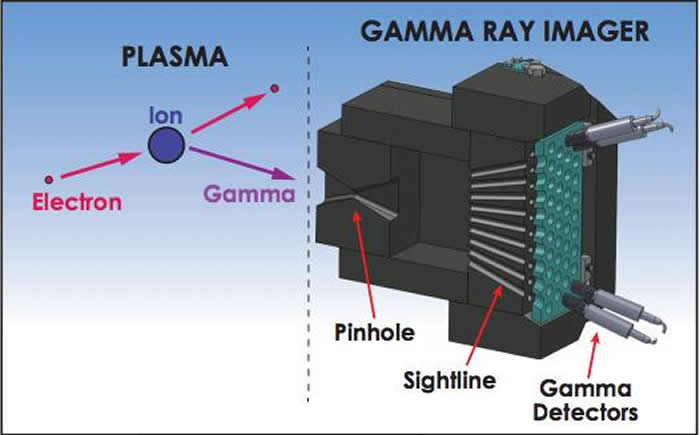A new type of gamma ray camera has been invented by the researchers at General Atomics (GA) that can image beams of energetic electrons inside ultra-hot fusion plasma.
The device is used in ongoing global research that is developing fusion into a new clean energy source. Turning fusion fuel into extractable energy requires it to be hotter than the center of the sun, hence in the plasma state.
If the shutdown phase of operation is not controlled well, released magnetic energy can drive a population of electrons to relativistic speeds. If this population is not controlled, the electrons impact the inner walls of the plasma chamber, leading to material damage.
A team of researchers are working to better understand the properties of these electrons at the DIII-D National Fusion Facility operated by GA in San Diego for the U.S. Department of Energy. They designed and built a Gamma Ray Imager to capture the image of these particles.
The Gamma Ray Imager works on the principle of a standard pinhole camera, except that it is made of lead and weighs 420lbs. (190.5kg). The imager actually records images of equally energetic gamma rays that are emitted by the electrons, and the lead is necessary to achieve a good focus. These gamma ray measurements provide information about the energy, direction, and quantity of electrons in the relativistic population, giving researchers an unparalleled view of how the energetic electrons evolve and interact with the fusion plasma.
“This system allows us to see with unprecedented detail how different plasma properties can mitigate these electrons,” said Dr. Carlos Paz-Soldan, the Scientist who led the first experiments utilizing the new camera.
The results, to be presented at the American Physical Society Division of Plasma Physics conference Oct 31st-November 4th, demonstrate experimentally that radiation ‘reaction’ forces are able to sap the highest energy electrons while collisions with other electrons are most effective at low energy.
These measurements imply that energetic electron control is not one-size-fits all, and that different energies require different control strategies.
With the new measurements, scientists can compare the behavior of the electron populations to theoretical models being developed by research teams worldwide. These models are, in turn, crucial to predict how the electron populations will behave in new reactors, such as the ITER tokamak now under construction in Cadarache, France, and thus ensure they can be adequately controlled.
More information: EurekAlert!



Comments are closed, but trackbacks and pingbacks are open.